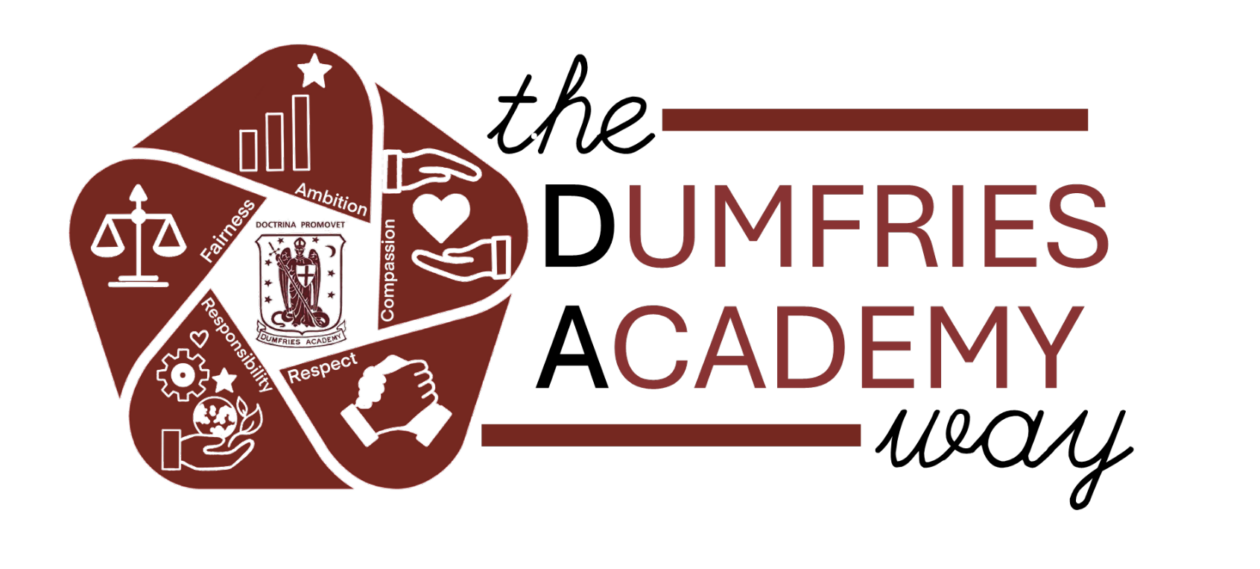Physics gives an insight into the underlying nature of our world and its place in the universe. From the sources of the power we use, to the exploration of space. Advances in Physics mean that our view of what is possible is continually being updated.
National 4
Pupils will learn about:
- Electricity and Energy – The unit covers the key areas of generation of electricity, electrical power, electromagnetism, practical electrical and electronic circuits, gas laws and the kinetic model.
- Waves and Radiation – The unit covers the key areas of wave characteristics, sound, electromagnetic spectrum and nuclear radiation.
- Dynamics and Space – The unit covers the key areas of speed and acceleration, relationships between forces, motion and energy, satellites and cosmology.
There is no external assessment. To achieve the National 4 Physics Course Award, learners must pass all of the required assessments for the above 3 units. Leaners are also required to pass an Added Value Unit. This requires them to carry out an investigation and apply the skills and knowledge they have learned during the course to produce and pass an assignment.
Useful links for parents to support young people:
BBC Bitesize: National 4 Physics – Scotland – BBC Bitesize
SQA N4 Physics (available via tile on Glow launch pad. The most useful section is the Course Assessment Specification).
National 5
Pupils will learn about:
- Dynamics – In this area the topics covered are: vectors and scalars; velocity-time graphs; acceleration; Newton’s laws; energy; projectile motion.
- Space – In this area the topics covered are : space exploration; cosmology.
- Electricity – In this area the topics covered are: specific heat capacity; specific latent heat; gas laws and the kinetic model.
- Waves – In this area, the topics covered are: wave parameters and behaviours; electromagnetic spectrum; refraction of light.
- Radiation – In this area, the topic is nuclear radiation
National 5 Physics has 2 components which are assessed. Component 1 is the examination. This is marked by the SQA out of 135 marks (25 multiple choice questions and 110 marks (scaled to 75marks) from structured and extended response questions). Component 1 is worth 80% of the overall grade. The remaining 20% is made up of Component 2 which is the assignment. This is made up of a research stage and a report stage done as a controlled assessment in school. The finalised assignment report will be marked by the SQA out of 20 marks.
Useful links for parents to support young people:
Achieve (excellent one stop complete revision aid – available via tile on Glow launch pad)
Scholar (online revision course – available via tile on Glow launch pad
BBC Bitesize: https://www.bbc.co.uk/bitesize/subjects/z6fsgk7
If pupils are absent (or just wish to revise a particular area of work), presentations are available for each key area of the course via the WestOS tile on the Glow launch pad.
SQA N5 Physics (available via tile on Glow launch pad. The most useful sections are the past papers / marking schemes and the Course Assessment Specification).
Higher
Pupils will learn about:
- Our dynamic Universe – the topics covered are: motion (equations and graphs); forces, energy and power; collisions, explosions and impulse; gravitation; special relativity; the expanding universe.
- Particles and waves – the topics covered are: forces on charged particles; the Standard Model; nuclear reactions; inverse square law, wave-particle duality; interference; spectra; refraction of light.
- Electricity – the topics covered are: monitoring and measuring AC; current, potential difference, power and resistance; electrical sources and internal resistance, capacitors; semiconductors and p-n junctions.
Useful links for parents to support young people:
Achieve (excellent one stop complete revision aid – available via tile on Glow launch pad)
Scholar (online revision course – available via tile on Glow launch pad)
BBC Bitesize
If pupils are absent (or just wish to revise a particular area of work), presentations are available for each key area of the course via the WestOS tile on the Glow launch pad.
SQA Higher Physics (available via tile on Glow launch pad. The most useful sections are the past papers / marking schemes and the Course Assessment Specification).
Advanced Higher
Pupils will learn about:
- Rotational motion and astrophysics – the topics covered are: kinematic relationships; angular motion; rotational dynamics; gravitation; general relativity; stellar physics.
- Quanta and waves – the topics covered are: introduction to quantum theory; particles from space; simple harmonic motion; waves; interference; polarisation.
- Electromagnetism – the topics covered are: fields; circuits; electromagnetic radiation.
- Units, prefixes and uncertainties – the topics covered are: units, prefixes and scientific notation, uncertainties; data analysis; evaluation and significance of experimental uncertainties.
Advanced Higher Physics has 2 components which are assessed. Component 1 is the examination. The 3 hour exam is marked by the SQA out of 155 marks which is scaled to 75% of the overall marks for the course assessment. The remaining 25% is made up of Component 2 which is the project. This is made up of a research stage and a report stage. The finalised project report will be marked by the SQA out of 30 marks (but scaled to 25% of the overall marks for the course assessment).
Useful links for parents to support young people:
Scholar (online revision course – available via tile on Glow launch pad)

